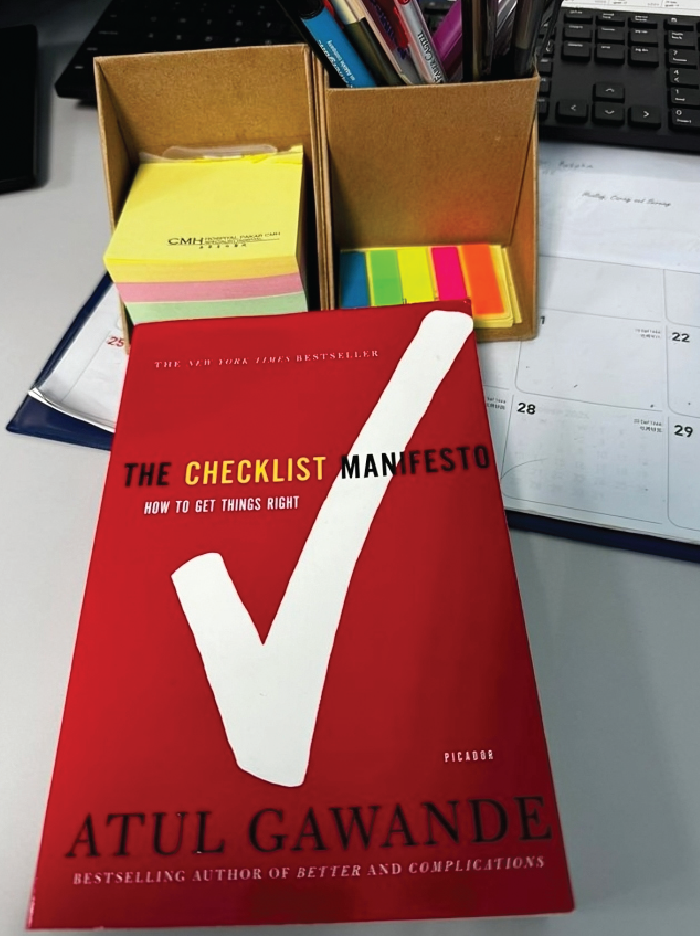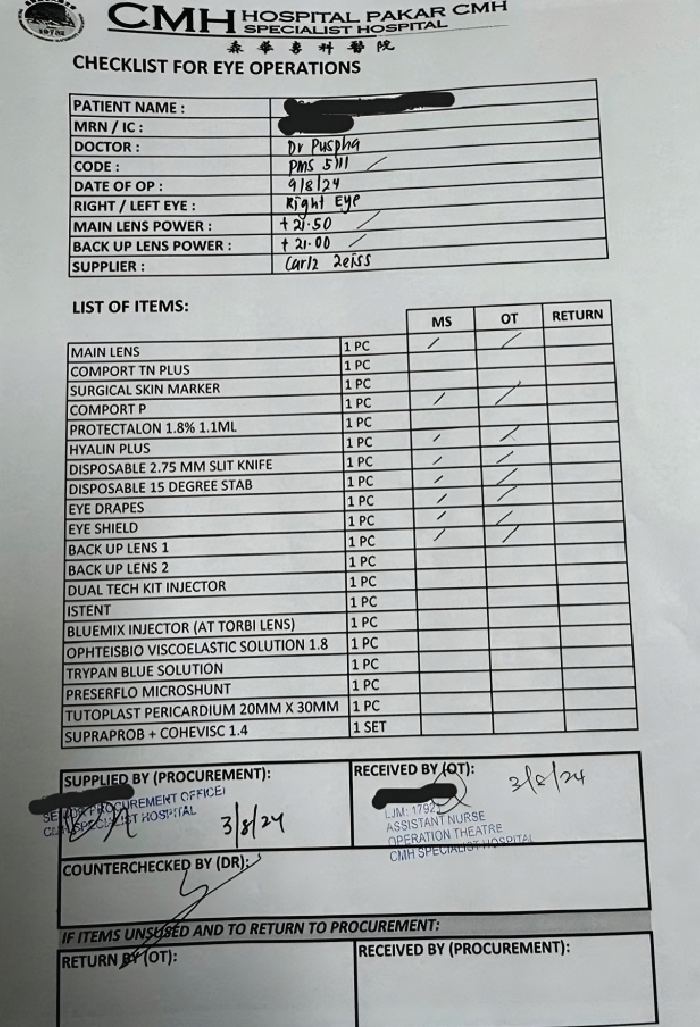
Credit: Images supplied by Pushpa Raman
I live with two people who thrive on checklists. My husband practically breathes them, tracking everything from daily tasks to long-term goals, both on paper and in his mind. My best friend? She finds immense satisfaction in ticking off each item on her to-do list, savoring the dopamine rush that comes with each completed task. As for me, I've always preferred a bit of organized chaos. Routines bore me, predictability wears me out, and I dislike the idea of boxing myself into a rigid schedule.
But, as life often teaches us, sometimes the things we resist are the things we need most.
Cataract surgery is one of the most common surgeries performed today. It’s quick, offers easy recovery, and is incredibly rewarding for patients and surgeons. But here’s the thing: the planning and execution require a level of precision where even a micrometer of error can have significant consequences.
When I worked in a public hospital, there were many checkpoints. Nurses, optometrists, medical officers, operation theater (OT) nurses – so many people were there to ensure errors were minimized. It was a system designed with safety nets. But when I transitioned to private practice, I realized I was mostly on my own. It became my responsibility to double-check every aspect of the surgery or procedure.
Here’s how it usually goes: I list my patients for surgery, the optometrist performs the biometry, I review the test results, specify the main lens and the backup lens, and indicate any specific instruments or MIGS devices that need to be ordered and prepared.
I remember performing surgery on a friend’s mom, a high myope. We had prepared for every eventuality, including ordering an additional low-power single-piece lens and having a backup three-piece lens ready. Unfortunately, toward the end of the phacoemulsification, I encountered a posterior capsular rent. It was small, so I planned to insert a three-piece lens in the sulcus with optic capture. I asked the staff to bring the three-piece lens I had ordered. They brought it, but the injector and cartridge were missing. I asked for a manual lens folder, but they couldn’t find it.
The situation, as many surgeons would understand, was incredibly frustrating. I explained to the patient that everything was under control and that we would sort the situation out soon. Meanwhile, I urged my staff to go to the store, call the vendor, or find an alternative injector from a different brand. It took an additional 20 minutes to resolve the issue. Although the surgery ended well, my friend’s mom wasn’t happy. Later in the postoperative recovery period, she developed a retinal detachment. Despite all the additional surgeries and recovery she endured, her primary unpleasant memory was the prolonged, anxiety-filled period of wait during the cataract surgery.
This incident stayed with me. As experienced surgeons, we know that while some variables in surgery are beyond our control, there are many we can manage effectively.
There's a Taoist saying that resonates deeply with me: “When the student is ready, the teacher will appear.” My “teacher” came in the form of Atul Gawande’s The Checklist Manifesto, a book I stumbled upon while browsing for new reading material. It originated from Gawande’s research for the World Health Organization, where he explored the use of a checklist to reduce surgical deaths globally. I was familiar with the “Safe Surgery Saves Lives” checklist – every surgeon knows it. The OT sister won’t let you leave the operating room until you’ve signed off on it. But I never imagined the painstaking process behind developing what seems like a mundane checklist, a powerful tool that can actually save lives.
As I finished reading the book, I knew what I had to do. I developed a checklist for cataract surgery that included everything: the main lens, the backup lens, the injector, and MIGS implants. This checklist is now reviewed by the store officer, and the OT nurses, and finally signed off by me. A simple step like this has saved me so much mental energy.
Atul Gawande emphasizes that it’s easy to make mistakes when you fall into predictable patterns. The fallibility of human memory and the stress of pressing events can lead to routine matters being overlooked. We often think, “This has never been a problem before,” until one day it is.
As I implemented the cataract surgery checklist, I realized the potential of this tool to improve other areas of my practice. I went on to develop additional checklists for choosing the right lens, assessing glaucoma patients, and performing glaucoma surgeries. These checklists have become an integral part of my routine, ensuring that no detail is overlooked.
I’m now pleased to say that no errors have been committed due to overlooked matters or lapses in memory. It’s a small change, but it has made a world of difference in the precision and safety of my work.
Human memory is far from perfect, especially when it comes to routine tasks. For someone like me, who thrives on flexibility and spontaneity, sticking to a checklist isn’t easy. But I do it anyway – because it’s not about me. It’s about ensuring the highest level of care for my patients, minimizing errors wherever possible, and maintaining the standards of excellence that every patient deserves.
As my husband drove off to work today, he reminded me, “Don’t forget to switch off the room light, turn off the water pump, and bring your water bottle.” I smiled, relieved that someone is keeping a checklist for me at home, so I can stay focused on the one I need to manage at work.
References
- A Gawande, The Checklist Manifesto: How to get things right, Metropolitan Books (2010).


